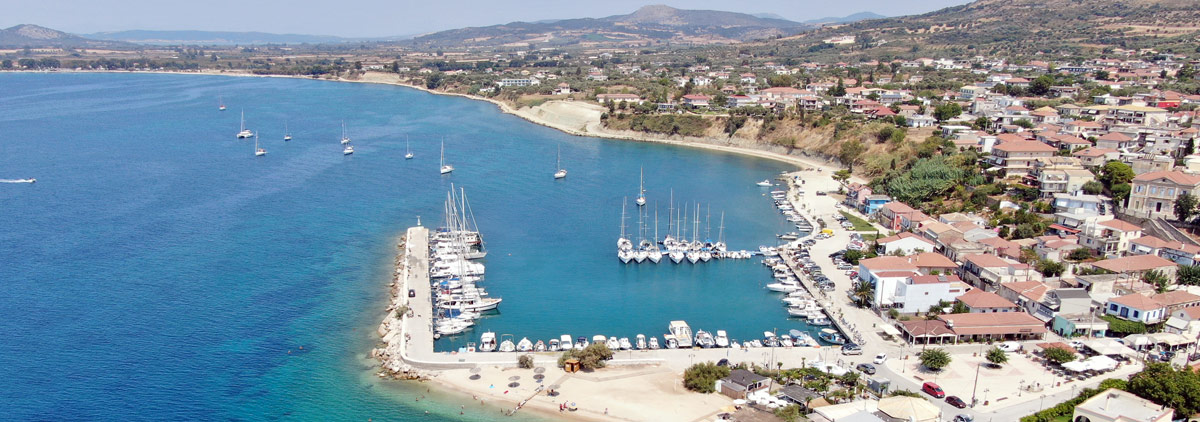
Paleros until 1928 was called Zaverda, a name that probably derives from the composition of the Slavic prefix «za», which means behind or on the sides and from the Latin «verde», which means green or garden. In other words, the “green slope”.
Paleros is considered to have been settled, according to Thucydides, like the rest of Acarnania, after the Trojan War. The Ancient City of Paleros was located in today’s Kechropoula (northwest of Paleros). The name “Kechropoula” probably came from the fact that millet may have thrived in the flora of the area.
The fortification of the ancient city was almost eight times larger than that of the Byzantine fortress and included a citadel, which was located at the eastern end of the fortification (approximately where the newer fortress is today). Its fortified enclosure, with a total length of about 2 km, is one of the most amazing examples of Akarnanian fortification art and is still standing in all its glory. Inside the ancient fortification, there was a fortress, which visually controlled the area.
According to Thucydides, the ancient city is probably identified with the city of Sollio, a colony of the Corinthians. Sollion was a naval station of Corinth that was captured during the Peloponnesian War by the Athenians and given to the Palerais-Acarnanians. Historians, however, differ. The German researcher Dorpfeld identifies ancient Paleros with the Homeric Niriko.
During the sea battle of Aktio, when Cleopatra saw that the battle against the Roman Octavian was not going well, to save herself and her fleet from the enemy, she had to drag her ships ashore, using a ditch (five-meter canal) leading there to Lake Voulkaria and, again by land, in the bay of Paleros. That’s the reason this passage was named “Cleopatra’s pier”.
During the Turkish occupation, the ancient fortress was formed by Ali Pasha (castle of Plagia) in his attempt to control the island of Lefkada (built identically to the neighboring castle of Peratia of Grivas). Its configuration was typical of the technique of the time, built with tiles and small stones, but also a large height achieved by the use of mortar. The castle of Plagia is one of the rare cases where the inner courtyard is not flat and no terrain operations have been performed. The castles of this period played an important role during the revolution of 21.
It is worth visiting the Castle of Kechropoula. A pillar and the double enclosure of the ancient Akarnanian City are preserved as well as the remains of ancient buildings. Also worth mentioning is the Archaeological site of Sterna, located near the Old Plagia as well as the Castellia of Plagia, which were probably part of the fortification complex of Sterna.
The area has many churches and chapels. The Holy Monastery of Agios Dimitrios, located in Paleros and built around the 16th century, stands out. The katholikon of the church is one-room stone, with a semicircular arch and a gabled tiled roof. Also, the Monastery of Panagia of Rombi located in Vatos, has a single-aisled and paved royal style. It is believed that it was built 100 years after the Fall of the City (Constantinople).
Almost 7 km outside the city, in the imposing Akarnanian mountains, lies the Holy Monastery of Agios Dimitrios with stunning views of the Ionian Sea. It is worth visiting on the feast of the Saint on October 26, where the locals make a special feast with horse rides.
Paleros is considered an ideal place for surfing, especially by beginners. The combination of mildly strong wind with low ripples makes the area ideal. Fans of scuba diving can go to the diving center to admire the Ionian seabed, the bay of Agia Paraskevi and Agios Ioannis Pogonias. These sheltered, closed bays are ideal for beginners. The dive begins in the shallows and then, after a short swim, a sponge orchard is revealed that is full of fish, invertebrates and algae.



